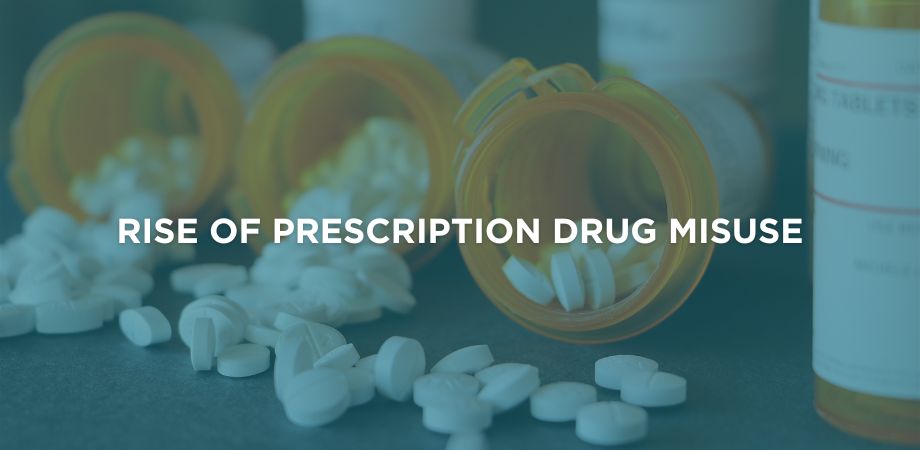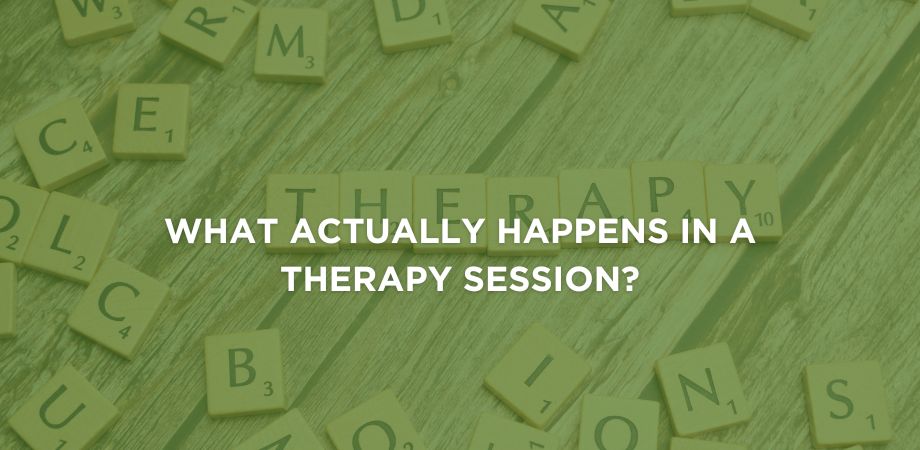MDMA, colloquially known as ecstasy or Molly, is a synthetic stimulant and hallucinogen that alters mood and perception. Ecstasy addiction develops when repeated use leads to psychological dependence, strong cravings, and difficulty controlling intake despite harmful consequences.
According to a 2015 United Nations Office on Drugs and Crime (UNODC) report, the use of MDMA and amphetamine-type stimulants has grown over the years in India, with curiosity (57%) and peer influence (17%) as primary reasons for initiation. MDMA is perceived as a “cool” and fashionable party drug largely abused in elite sections of society, with usage linked to sexual activity before or during use (93% of users reported this).
The symptoms of ecstasy addiction range from tolerance buildup and cravings to anxiety, depression, and social withdrawal.
The causes include genetic predisposition, psychological vulnerabilities, environmental influences, and social factors such as peer pressure.
Treatment for ecstasy addiction involves medical detox, behavioural therapies like cognitive behavioural therapy (CBT), structured rehabilitation programs such as partial hospitalisation or intensive outpatient care, and, in some cases, medications that help regulate mood and manage withdrawal symptoms. Together, these de-addiction approaches aim to restore brain balance, address underlying triggers, and support long-term recovery.
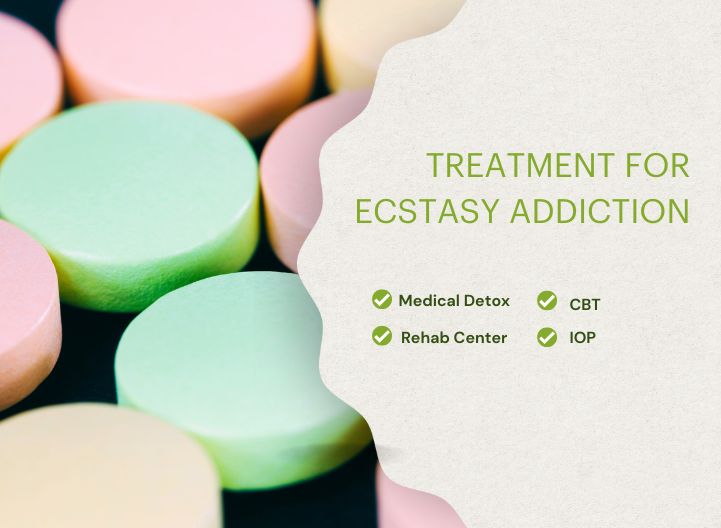
What Is Ecstasy?
Ecstasy, scientifically called MDMA (3,4-methylenedioxymethamphetamine), is a synthetic psychoactive drug. The drug acts as a stimulant and a hallucinogen, producing effects such as amplified energy, emotional warmth, distorted sensory perception, and heightened empathy.
It comes in tablet, capsule, or crystalline powder form. Once ingested, ecstasy raises serotonin, dopamine, and norepinephrine levels in the brain, creating feelings of euphoria but also overstimulating the nervous system.
Why Is Ecstasy Addictive?
Ecstasy is addictive mainly due to its psychological effects. MDMA floods the brain with serotonin and dopamine, creating intense pleasure, emotional bonding, and sensory enhancement. Over time, the brain adapts by reducing natural serotonin production, leaving users dependent on the drug for mood regulation.
While ecstasy does not cause the same physical withdrawal symptoms as opioids, its psychological grip is powerful. Cravings, tolerance buildup, and emotional instability without the drug are major reasons why people become addicted.
What Are the Signs, Symptoms, and Side Effects of Ecstasy Addiction?
The signs and symptoms of ecstasy addiction are cravings, tolerance, or neglect of responsibilities, while also experiencing psychological struggles such as anxiety and paranoia. Physical complications, such as dehydration and hyperthermia, further worsen the condition and result in long-term harm.
The symptoms of ecstasy addiction are discussed as follows:
Signs of Ecstasy Addiction
- Cravings: strong desire to use ecstasy despite risks.
- Tolerance buildup: needing higher doses to feel the same effects.
- Obsessive focus on use: constantly thinking about the drug.
- Neglecting responsibilities: poor performance at school, work, or home.
- Social withdrawal: isolation from non-using peers.
- Continued use despite harm: ignoring physical and mental health problems.
Symptoms of Ecstasy Addiction
- Cravings: strong desire to use ecstasy despite risks.
- Tolerance buildup: needing higher doses to feel the same effects.
- Obsessive focus on use: constantly thinking about the drug.
- Neglecting responsibilities: poor performance at school, work, or home.
- Social withdrawal: isolation from non-using peers.
- Continued use despite harm: ignoring physical and mental health problems.
Side Effects of Ecstasy Addiction
- Dehydration: common at parties and dance events.
- Hyperthermia: dangerously high body temperature.
- Elevated heart rate: stress on the cardiovascular system.
- Memory impairment: long-term cognitive decline.
- Jaw clenching: involuntary muscle tension.
- Nausea: physical discomfort during or after use.
How Does Ecstasy Addiction Affect the Brain?
Ecstasy addiction affects the brain by altering neurotransmitter activity, especially serotonin, dopamine, and norepinephrine. MDMA sparks a massive release of serotonin, which regulates mood, sleep, and social behaviour.
This elicits short-term euphoria but long-term depletion of natural serotonin. Chronic MDMA users exhibit impaired memory, poor impulse control, and higher risks of depression. Brain imaging also suggests structural and functional alterations in areas responsible for emotional regulation and cognition, making recovery more challenging, as revealed by Okwoli A. in “New Study Reveals Long-Term Effects of MDMA on the Brain’s Glutamate-Glutamine Complex.”
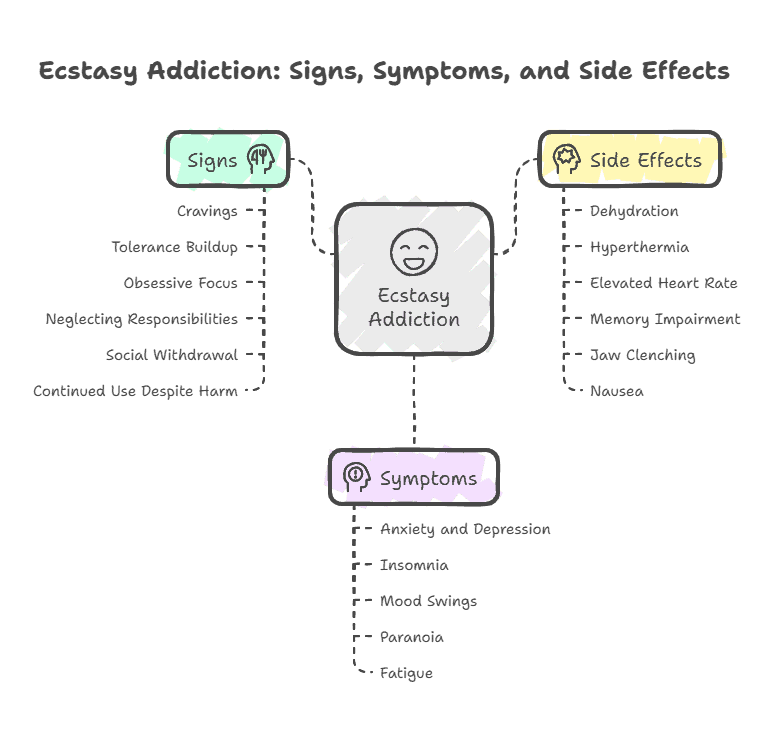
What Are the Causes of Ecstasy Addiction?
The leading causes of ecstasy addiction are genetic predisposition, psychological vulnerabilities, environmental influences, and social pressures. These factors interact to make individuals more vulnerable to dependence.
The causes of ecstasy addiction include:
- Genetic factors: Family history of substance abuse increases susceptibility due to inherited traits affecting dopamine and serotonin regulation.
- Psychological factors: Conditions such as depression, anxiety, or trauma drive people to use ecstasy as a coping mechanism, creating a cycle of dependence.
- Environmental factors: Easy access to drugs, exposure to nightlife culture, and availability in clubs or festivals promote repeated use.
- Social factors: Peer pressure and the desire to fit into social groups encourage experimentation that evolves into addiction.
What Are the Treatment Options for Ecstasy Addiction?
The main treatments of ecstasy addiction are medical detox, structured de-addiction rehabilitation programs like PHP or IOP, medication support, and behavioural therapies such as CBT. Since ecstasy primarily precipitates psychological dependence, treatments focus on restoring brain chemistry, teaching coping strategies, and preventing relapse.
Medical Detox
Medical detox involves supervised withdrawal in a safe environment where symptoms like depression, insomnia, or anxiety are managed. Although ecstasy does not cause severe physical withdrawal, detox helps stabilise mood, prevent relapse, and set the foundation for therapy. Counselling sessions and supportive care are incorporated.
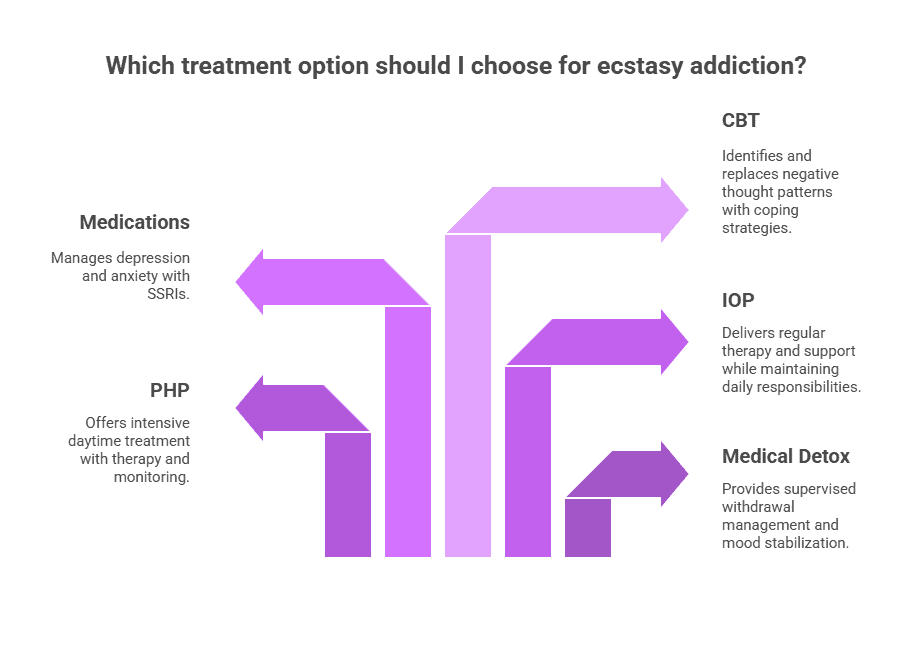
Partial Hospitalisation Program (PHP)
A PHP provides structured daytime treatment while allowing patients to return home at night. It includes therapy sessions, group counselling, and medical monitoring. PHPs are effective for those needing intensive support but who maintain some independence.
Intensive Outpatient Program (IOP)
IOPs are less intensive than PHPs but deliver regular therapy and support several days a week. They are ideal for people transitioning from inpatient care or those who need treatment while managing daily responsibilities like work or family.
Medications
Currently, no approved medications exist specifically for ecstasy addiction. Doctors prescribe SSRIs (Selective Serotonin Reuptake Inhibitors) or other antidepressants to aid in managing depression, anxiety, or serotonin imbalances brought about by MDMA use.
Cognitive Behavioural Therapy (CBT)
CBT is one of the most effective therapies for ecstasy addiction, enabling individuals to identify thought patterns and behaviours that trigger drug use and replace them with healthier coping strategies.
In real-world community settings, one study, “ Testing the Effectiveness of Cognitive-Behavioural Treatment for Substance Abuse in a Community Setting: Within Treatment and Posttreatment Findings,” by Morgenstern et al. 2001, reported 90% abstinence during treatment and 85% continued abstinence at six months, emphasising the practical effectiveness of CBT for substance use, though it didn’t isolate CBT in contrast to other therapies.
Is Ecstasy Legal?
No, ecstasy (MDMA) is not legal in most countries. It is classified as a Schedule I substance under international and national drug control laws, which means it has no accepted medical use and a high potential for abuse.
- Under the 1971 UN Convention on Psychotropic Substances, MDMA is listed in Schedule I, reflecting its lack of recognised therapeutic value and significant abuse risk.
- In the United States, MDMA is categorised as a Schedule I drug under the Controlled Substances Act, prohibiting its manufacture, distribution, or possession outside approved research.
- In India, ecstasy is strictly banned under the Narcotic Drugs and Psychotropic Substances (NDPS) Act, 1985, which criminalises its production, possession, and trafficking, with penalties ranging from fines to long-term imprisonment.
- In Australia, MDMA was recently rescheduled to Schedule 8 for controlled medical use in PTSD treatment, but it remains illegal for recreational purposes.
Ecstasy continues to be internationally regulated because it has no accepted medical use in general practice and poses a high potential for misuse.



